Choosing the right plants for your borders
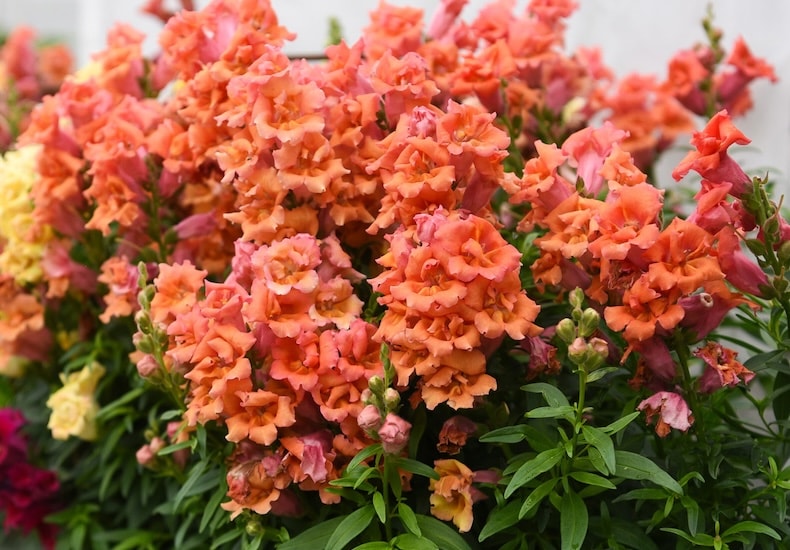
Plant antirrhinum in the front of your borders
Image: Antirrhinum 'Sweet Duet Series' from Thompson & Morgan
From small urban spaces to rambling country gardens, mixed borders can be adapted to suit any style or planting theme. Whether you want to create a cool and contemporary feel or a bright cottage garden, there’s a huge variety of plants and flowers from which to choose. The trick is to consider heights, textures, colours, shapes and seasons when planning your scheme.
Here are some top tips on how to choose the best plants for your border. And in the meantime, browse our full range of garden plants for inspiration.
Find the right plant for the right place
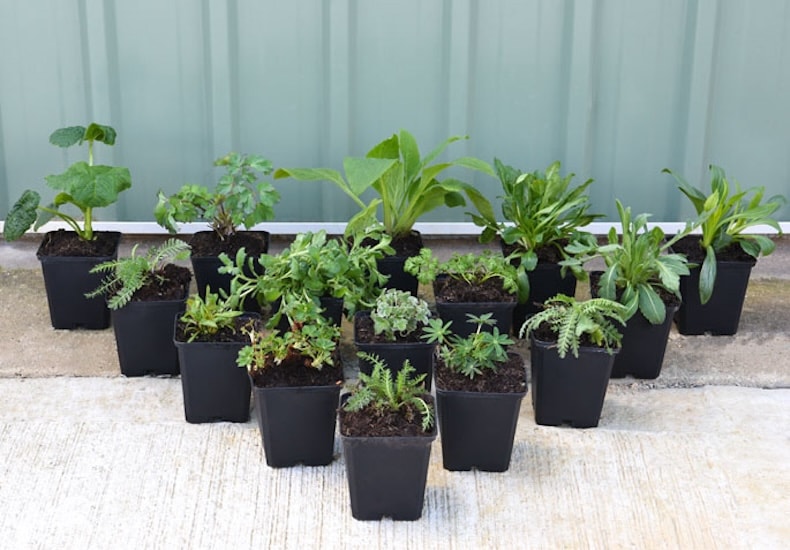
Arrange your potted plants until you're happy with the layout
Image: Thompson & Morgan
Before you start choosing specific plants for your border, work out which direction it faces and how much sun it receives throughout the day. There’s no point buying plants that need full sun if your border is in shade for the entire afternoon. Equally, plants that prefer moist conditions won’t thrive in a hot, south-facing border filled with very dry soil.
If you need to improve the quality of the soil before planting, prepare it in advance to allow it to settle. Make sure the area is free from grass and weeds, add well-rotted manure or compost and create an edge that will be easy to maintain. If you want your border to have a more natural and organic feel, build in a few curves to give you some deeper planting areas. For a striking and modern border, go for straight lines and add lawn edging like weathered steel to offset the softness of the foliage.
Work to a theme
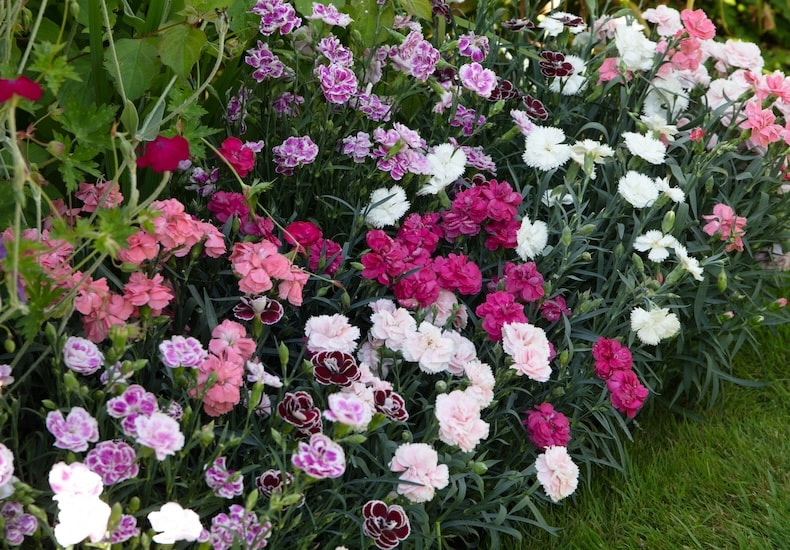
Dianthus adds clove-like fragrance to the front of your borders
Image: Dianthus 'Scented Pleasures Collection' from Thompson & Morgan
For a sense of cohesion, decide on a theme to help you come up with a shortlist of plants. This could be based on a colour (like different shades of pink), or you might want to create a Mediterranean, Japanese or jungle feel. Once you know what you’re aiming for, and what sort of conditions you’re growing in, the final plant selection becomes much easier.
Another good piece of advice is to keep it simple. Rather than choosing 30 or 40 different plants and shrubs, limit yourself to just a few and plant them in groups. This has more impact than a scattergun approach, and is much easier to maintain when it comes to pruning.
Create structure with shrubs
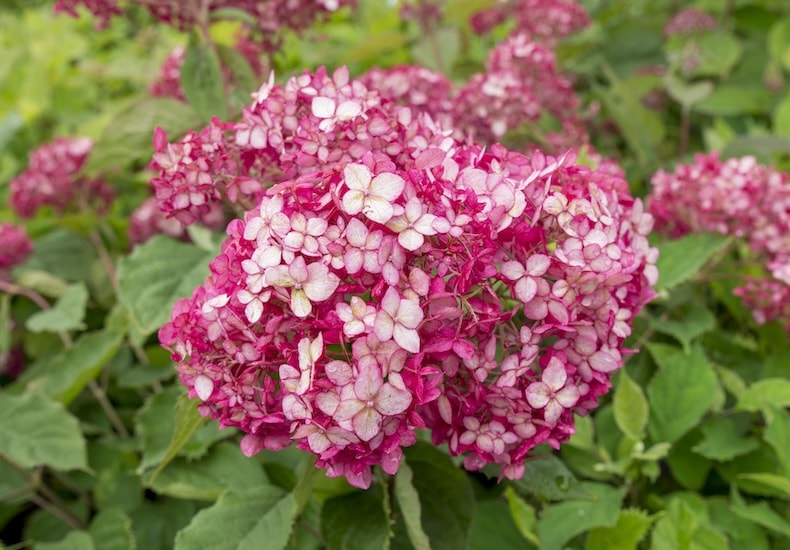
Hydrangea 'Ruby Annabelle' adds bright pops of colour to shady borders
Image: Hydrangea arborescens 'Ruby Annabelle' from Thompson & Morgan
No matter what size border you’re working with, you’ll get the best results by combining plants that give you all-year-round interest. Successful mixed borders usually contain a balance of shrubs and border perennials, with annuals to help fill any gaps as everything grows.
Evergreen shrubs are an excellent place to start, as they provide a backbone of shape and structure throughout the seasons. Once your border has a skeleton in place, think about adding seasonal colour and interest using a range of herbaceous perennials. These can be raised from seed, or bought as bare roots, plugs or potted plants.
The benefits of bareroot plants:
- Cost-effective (but only sold between October and March while plants are dormant)
- Easy to plant
- Quick to establish
- Supplied with no soil at the roots to reduce packaging
The benefits of perennial plug plants:
- Cheaper than potted plants
- Initial sowing and growing has been done in optimum conditions
- Huge range of varieties available
- Quick to establish
The benefits of hardy potted plants:
- Can be planted all year round
- Using larger plants gives you instant impact
Think about spacing
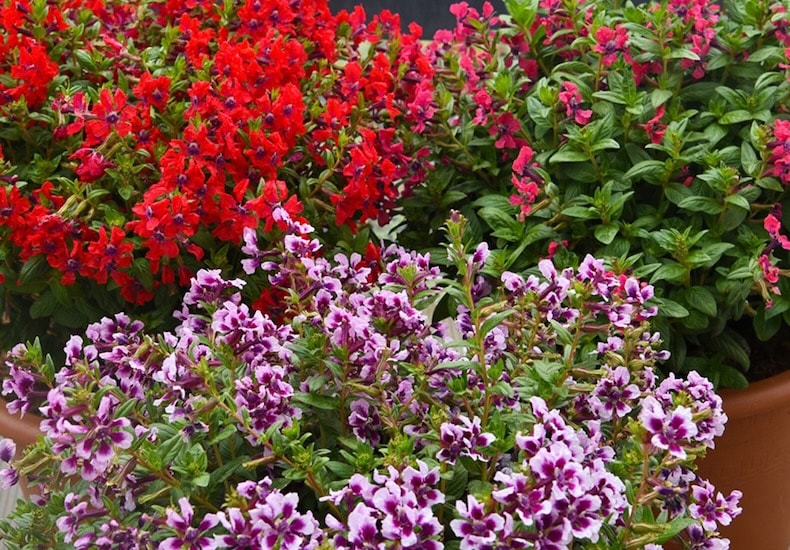
Plant cuphea with other bright annuals to create a colourful border of blooms
Image: Cuphea 'Sweet Talk Collection' from Thompson & Morgan
If you’ve raised lots of plants from seed or bought trays of plug plants, you can perhaps afford to over plant for immediate effect, thinning out in future seasons. However, if you’ve purchased larger specimen shrubs and perennials in pots, you might prefer to take a more considered approach by leaving plenty of space for these more costly perennial plants to grow into.
Planting distances will vary depending on the varieties selected, but as a general rule, when designing a mixed border, allow 30-45cm between plants of the same variety and 60-90cm between groups of different varieties.
For more information, take a look at our step-by-step guide on how to plant a mixed border.
Care for your new border

Water newly-planted borders in dry spells to help them get established
Image: Easy Hose Stainless-steel Hose from Thompson & Morgan
- For the first year, keep your newly-planted border well watered, especially during dry periods. In future years, watering should only be needed during summer dry spells.
- Apply bonemeal or slow release fertiliser each spring.
- Perennials should be cut down in autumn as their foliage dies back, Some have ornamental seedheads or foliage that can be left through winter to add interest on a frosty morning.
- Slow-growing and/or compact shrubs usually don’t require regular pruning.
- Most deciduous shrubs can be pruned during winter and early spring while dormant.
- Evergreen shrubs are best pruned in mid- to late-spring or as soon as flowering has finished.
Quick border design tips
- Remember to choose a selection of plants with different seasons of interest.
- Set out your plants by height, tallest at the back of the border, shortest at the front.
- Vary the height along the border to avoid a uniform, blocky feel.
- Set out the larger shrubs fairly evenly and surround them with groups of perennials.
- Shrubs can also be grouped in clusters where space allows.
- Set out perennials in either single variety groups or repeated blocks of the same perennial mix.
- Odd numbers give a more natural feel when planting in groups.
We hope this has given you plenty of ideas to help you plan your new border. If you need more information and advice on plants for a purpose, including the best choice for dry borders, shady areas, and tricky corners, visit our helpful hub page.
Sign Up For Exclusive Special Offers




© 2024 Thompson & Morgan. All rights reserved. A division of Branded Garden Products Limited.
Sign up for exclusive offers!



